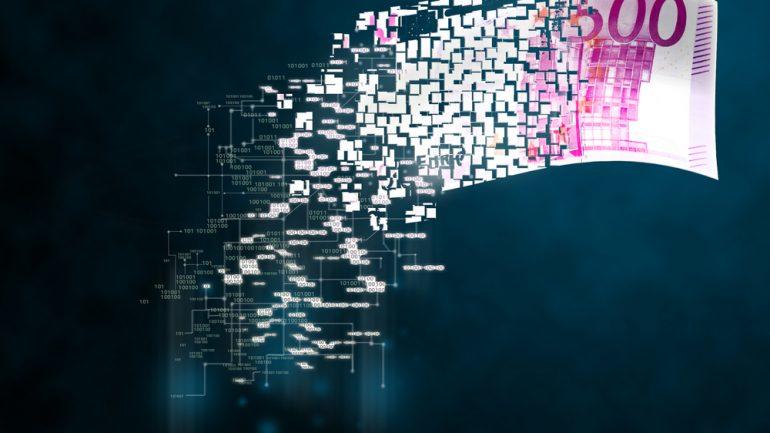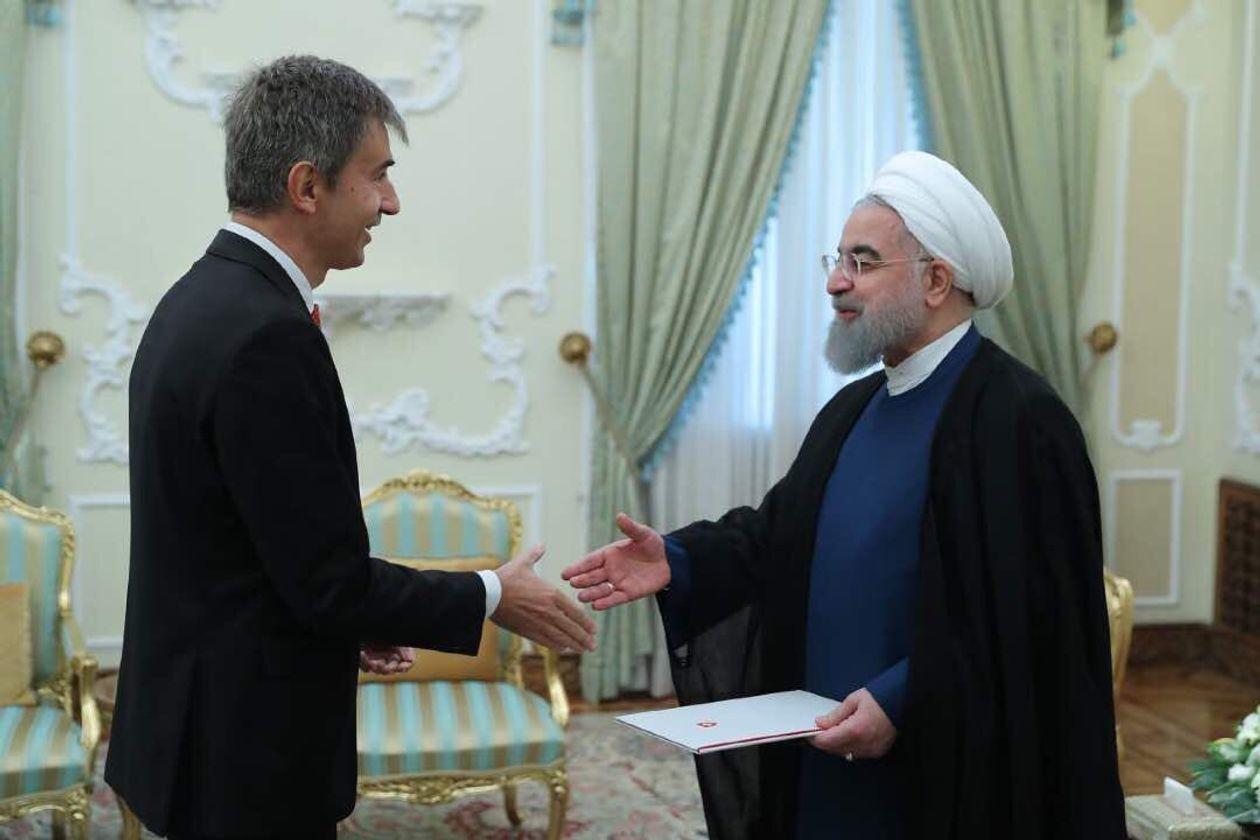Throughout 2019 I posted numerous articles on the subject of central bank digital currency (CBDC’s) and how simultaneous reforms of payment systems throughout the world are being undertaken in preparation for the full digitisation of money.
I have demonstrated through the words of central bankers themselves how the goal of introducing digital currency is an integral part of their plans over the next decade. It is on record that global planners want to ‘reset‘ the current financial system and replace it with a new set up underpinned by intangible assets. Global elites refer to this as either the rise of the Fourth Industrial Revolution or a ‘new world order‘ of finance. What is a carefully preordained agenda has been fashioned to appear as nothing more than the innocent evolution of technology. It is a deception that can be challenged using the communications issued by central banks.
Rather than rely on supposition, let’s allow those within the central banking community to speak for themselves.
In November 2019 Johannes Beermann, a member of the German Bundesbank responsible for cash management, gave a speech in China called ‘Cash and digital currencies from a central bank’s perspective.’ Beermann confirmed that cash circulation in Germany is on the rise, with the Bundesbank having issued over half the total value of euro banknotes now in circulation. ‘There may be less cash around‘, said Beermann, ‘but we are far from being cashless.’
Beermann went on to say that new methods of payments ‘tend to evolve in stages‘, and that ‘the transition towards a society with less cash has to be driven by the user and not the supplier.’ But even though a large proportion of German citizens are still demanding banknotes, it has not prevented the Bundesbank from openly discussing the possibility of a central bank digital currency superseding cash in the future.
Publicly, the Bundesbank remain at the stage of viewing blockchain and distributed ledger technology as ‘promising‘, with ‘central banks open to them in principle.’ The ‘transformation‘ of the payment landscape, therefore, remains in flux and ‘anything but complete.’
As mentioned by Beermann, what has propelled the issue of central bank digital currency to the forefront of debate is the prospect of Libra, a new global payment system proposed by Facebook which would be built upon blockchain technology. It has prompted discussions on the need for a ‘pan-European digital payment solution‘. Prior to the announcement of Libra and subsequent criticism by central bank officials, digital currency was largely a niche concept within the mainstream. Only now has it begun to take a more prominent role, and given central banks the platform to shape the narrative on the future of money.
Near term, however, public issuance of central bank digital currency is not on the horizon. ‘We should go one step at a time‘, cautioned Beermann, who believes that cash will ‘continue to enjoy great popularity in the euro area.’
Following on from Beermann was Benoit Coeure, who later this month will step down as a member of the executive board of the European Central Bank to head up the Bank for International Settlement’s Innovation BIS 2025 initiative. In discussing ‘a European strategy‘ for ‘the retail payments of tomorrow‘, Coeure brought up the subject of CBDC’s and payment systems. As with Beermann, he stressed the need for a ‘pan-European market-led solution‘, one that transcends national boundaries and becomes the accepted standard throughout the entire European continent. But as we have come to expect from global planners, ambitions on this scale are advanced gradually. Which is probably why Coeure remarked that ‘global acceptance should be a long-term goal.’
The ECB, according to Coeure, will ‘continue to monitor how new technologies change payment behaviour in the euro area‘. This is predominately in response to a decline in the demand for physical money. The key takeaway from Coeure’s speech was in declaring that the implementation of central bank digital currency would ensure that ‘citizens remain able to use central bank money even if cash is eventually no longer used.’
This is why the notion of central banks being opposed to digital currency and seeing it as a threat to their supremacy is nonsense. With cash comes anonymity, and with that an inability to track and trace the economic behaviour of individuals. It was Mark Carney who back in 2018 declared data to be ‘the new oil‘. What central banks want is for every citizen to become entirely dependent on an all digitised system that the banking elites control. For instance, the growth of contactless payment technology is just one element which has greatly assisted them in this endeavour.
Another voice that is prominent on the subject of digital currency is Francois Villeroy de Galhau, governor of the Bank of France. Speaking in December last year (Central bank digital currency and innovative payments), de Galhau talked about the emergence of ‘new players‘ in the field of payments and how they have taken the initiative to transform the payment industry. De Galhau sees this as a challenge for banks, and potentially even a ‘threat to European sovereignty‘ if these players are based outside of Europe (most notably China).
As you might expect, de Galhau proposed a two fold response to this ‘threat‘. First, central banks should increase the speed on new payment solutions, and second they should consider the viability of introducing central bank digital currency.
In de Galhau’s own words:
We first have to take advantage of the opportunities offered by the digital revolution to develop a genuine pan European payment solution.We as central banks must and want to take up this call for innovation at a time when private initiatives – especially payments between financial players – and technologies are accelerating, and public and political demand is increasing.
This stance is exactly in line with those of Johannes Beermann and Benoit Coeure, and reinforces the coordinated nature of central bank communications. The innovations of private developers are not so much a threat as more an opportunity to position central banks as the lynch pin of a future all digital system. It is why the likes of the Fed and the Bank of England are engaged in reforming their payment systems. The plan seems to be that the private sector spearheads the technological side, whilst the central banks act as the gatekeepers on aspects such as coverage and regulation. It is they who will ultimately determine who gains access to the next generation of payment systems and who does not, through a swathe of new regulatory requirements.
2020 is the year when the encroachment towards CBDC’s will kick up a notch. In France, de Galhau wants to begin experimenting with the technology over the next few months. It will amount to a test bed for the Euro system as a whole, and for de Galhau will ‘make looking into the possibility of an ‘e-euro’ one of its next focuses.’ The Bank of France will also take part in the BIS Innovation Hub, which will be led by Benoit Coeure. As shown in previous articles, the BIS are at the forefront of the central bank digital currency agenda.
But where will banks start with their experimentation? CBDC’s can be classified on two levels – wholesale and retail. Wholesale refers to payments made exclusively between financial sector firms, whereas the retail variant would be for general consumption at the public level. De Galhau believes that there would be ‘some advantage in moving rapidly to issue at least a wholesale CBDC.’ This would benefit central banks given that a limited release would enable them to iron out deficiencies before moving towards a full scale release that in the end would be at the expense of banknotes.
Finishing out 2019 was a speech by Mark Carney at a farewell dinner in honour of Benoit Coeure. Here, Carney explained the necessity behind central banks and private innovators working together to build a new financial system. The goal is to ‘provide the
best-in-class payment infrastructure that can enable private innovators to deliver the payment products and services our citizens need.’ Infrastructure that is of course controlled by the central banking system. From the Bank of England’s perspective, they plan to ‘allow new entrants access to the same resources as incumbents, while holding similar risks to similar standards.’
best-in-class payment infrastructure that can enable private innovators to deliver the payment products and services our citizens need.’ Infrastructure that is of course controlled by the central banking system. From the Bank of England’s perspective, they plan to ‘allow new entrants access to the same resources as incumbents, while holding similar risks to similar standards.’
Central banks are making every attempt to convince those interested that innovations in the field of payments will result in broader competition and the growth of a decentralised network of operators. If the extent to which global industry is scrupulously monopolised by a handful of corporations is anything to go by, I highly doubt a CBDC future will be decentralised. An indication of this is in how developers and central bank officials have spoken of endorsing ‘permissioned‘ blockchain systems over ‘unpermissioned‘. The developers behind Libra want to use a permissioned network, meaning access is restricted to participants. On the opposite side today you have Bitcoin which uses unpermissioned blockchain. This is one of the reasons why central banks have cited Bitcoin as both an unstable asset and a risk to financial stability. But whilst they may speak out against Bitcoin, what they have not done is ostracise the technology behind it.
So far in 2020 we have heard from Bundesbank President Jens Weidmann and ECB governor Christine Lagarde on the prospect of digital currency. In light of Facebook’s Libra, Weidmann was asked in an interview whether the ECB should counter it with it’s own digital currency. ‘I don’t believe in always calling for the state right away,’ said Weidmann.
Whilst central banks continue to quietly advance their digital currency objectives, a narrative playing out within the financial media is that private innovations such as Libra represent a threat to the financial system due to a lack of regulatory oversight. This has created a sense of distrust with private led innovations. Important to recognise is how CBDC’s are a medium to long term goal. When banks are ready to launch digital currency, they will want it to be in an environment where people are increasingly looking to global institutions to provide stability in an increasingly unstable financial system.
As with fellow central bank officials, Weidmann pledged that central banks ‘will provide cash as long as citizens want it to.’ My concern is that as digital payment options become ever more convenient and cash usage falls, citizens will overlook the obvious dangers of entrusting their life assets to a digital only construct.
In a separate interview, Christine Lagarde was quizzed on whether creating a cryptocurrency was ‘a legitimate task for the ECB‘.
Innovation in the area of payments is racing ahead in response to the urgent demand for quicker and cheaper payments, especially cross-border ones. The Eurosystem in general and the ECB in particular want to play an active role in this field, rather than just acting as observers of a changing world.
I think we can safely take that as a yes.
When you combine all the comments raised there is one overarching message. Central banks are more than prepared for the digital revolution, primarily because they are the leading architects behind its inception.

